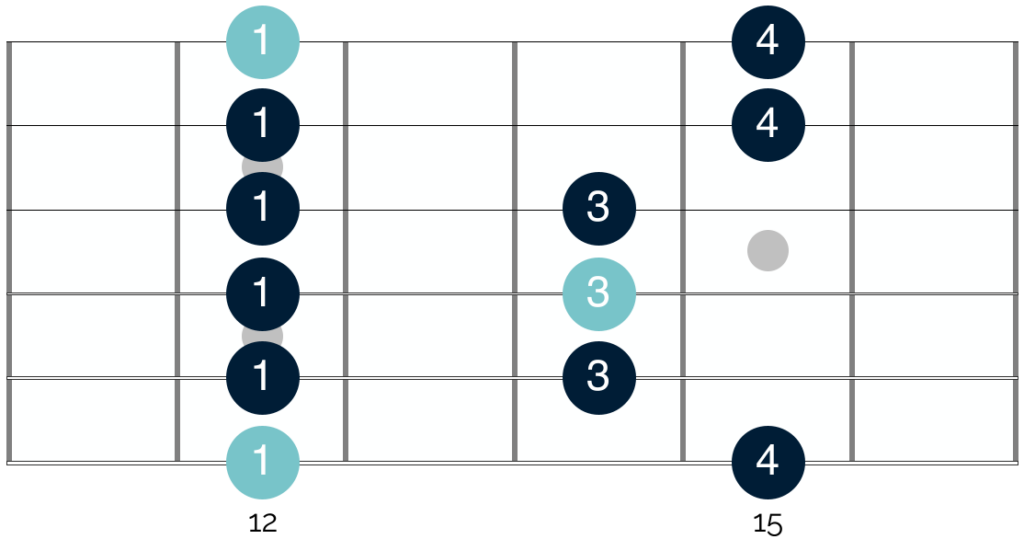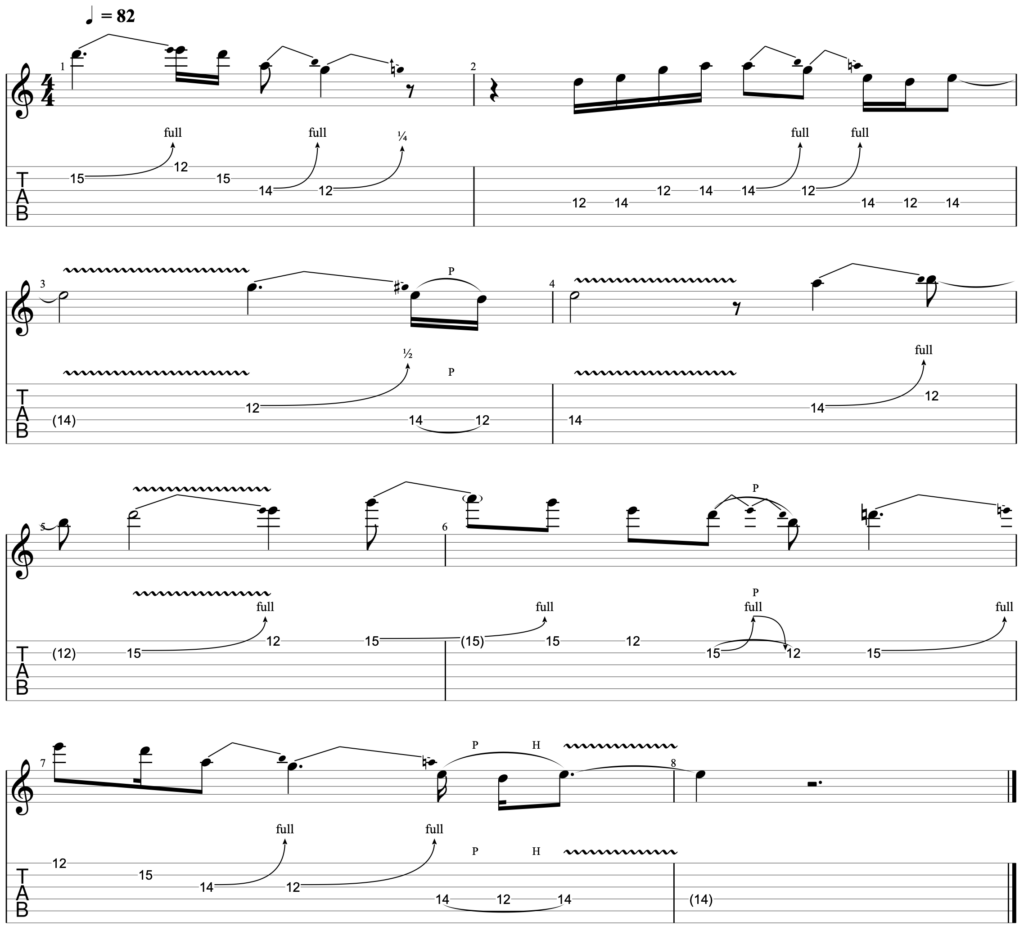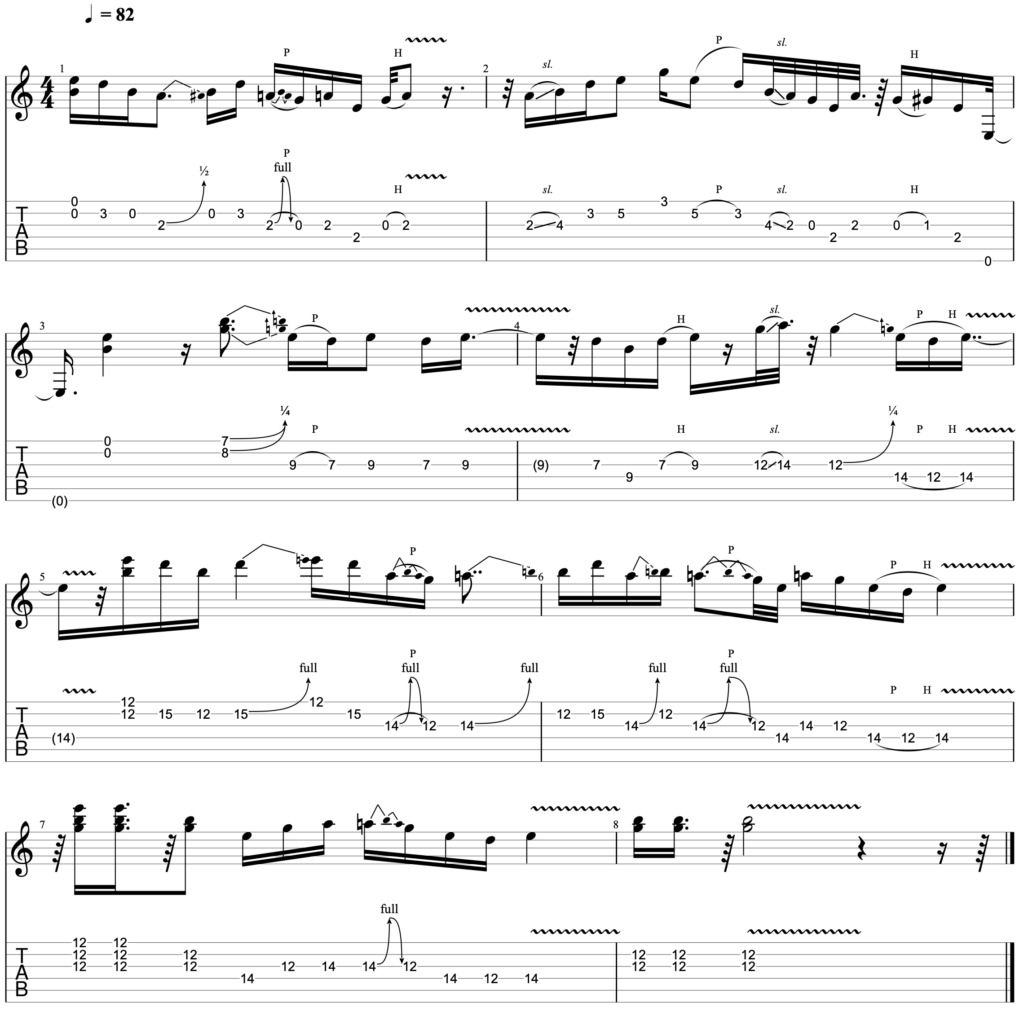This article is a full and free lesson from one of my courses inside The Blues Club – the Hey Joe Solo Sessions.
If you want to learn the full solo in Hey Joe, the musical context of the song and how you can recreate Hendrix’s killer blues tones, then you can find out more about The Blues Club and sign up here.
You will gain instant access to the course, in addition to a range of further resources and unlimited support via messenger.
Here though, we will be looking at how you can approach improvising over the song using this backing track here. The lesson references some of the material covered in previous lessons of the full course. However I hope you find this helpful and enjoy jamming and dialling in some of those killer Hendrix style licks!
Specifically, we will cover:
- The techniques that will help you to create a solo with the same character as Hey Joe
- How to craft an interesting and varied solo in a single shape of the minor pentatonic scale
- Ways to navigate across the whole fretboard in the key of E minor
- How to feel in control of your improvisations and play in a way that you find comfortable
So with that in mind, let’s get into it! Here are the key ideas you can take from Hey Joe and apply in your own playing:
Getting started
As noted at various points during this course, the solo in Hey Joe is interesting because it is almost exclusively played in the first shape of the E minor pentatonic scale:

Hendrix does include a number of notes from the E major pentatonic scale. And in the earlier lesson on musical context we discussed the benefits and challenges of this approach.
However, when it comes to recreating the feel of Hendrix’s solo in your own playing, I am a big advocate of soloing in the same shape and section of the fretboard. The obvious benefit of this is that it will help you to replicate that element of Hendrix’s solo, which will get you closer to soloing in the same style.
Beyond that however, the benefits all relate to learning.
If you are a little earlier in your blues guitar playing journey, then focusing on the first shape of the minor pentatonic scale will help you to get totally comfortable with that shape.
This is without question the most widely used scale shape in the blues, and so consolidating it at a deep level will have a variety of benefits for your playing.
Even if you have been playing for some time however, focusing on a single shape in this way is also useful. It will encourage creativity and get you thinking about all of the different ways that you can navigate across the scale. And this will help to freshen up the licks and ideas you currently use in your playing.
It is for this reason that the improvisation I play at the beginning of the video linked above is based entirely on this shape.
If you would like to learn some of the licks and ideas I play, the tab is as follows:

At the 82 beats per minute at which the song is played, this is how this improvisation sounds:
Now, as you might imagine, the scales and shapes that you use when soloing do not alone dictate the character of your improvisations.
Blues guitar playing is all about nuance. It is about breathing life into simple groups of notes, and changing the feel of those same notes by altering your phrasing and articulation.
So, whilst the scales you use here will have an impact on the character of your solo, it is important to consider how you bring the notes in the scale to life and recreate the character of Hendrix’s solo in Hey Joe.
Throughout the course, I have outlined some of the key learning points that you can take from Hendrix’s approach and apply in your own solos.
All of those are applicable here. However to help you streamline your approach, the key elements that I would recommend focusing on – and which I thought about when improvising – are as follows:
Technique choice
The solo in Hey Joe is intense and aggressive. As such, when you are improvising, I would recommend thinking about techniques that will increase the intensity of your playing.
Certain techniques have an inherently intense sound. And so adding these into your solos will help to create that same intense feel in your playing.
It is for this reason that my improvisation opens with a unison bend and features a lot of double stops. Both of these techniques add intensity to the improvisation, and will help you to create that heavier blues rock feel in your playing too.
These are not the only techniques that can help to increase the intensity of your improvisations. As noted in previous lessons of the course – using trills or lots of hammer ons and pull offs in your playing will also create a certain character in your solos.
Articulation
In music, the term articulation refers to how a single note is sounded.
This can include the techniques that you use when playing. However more broadly it refers to the subtler ways that you implement those techniques. How loud do you play each note? What kind of vibrato are you using? Are you cutting each note short or letting them ring out into one another?
Appreciating these more nuanced elements is important, as they will determine your success at creating a heavier and more aggressive feel in your playing.
In other words, you can add intense sounding techniques to your playing. However, if you are not targeting those techniques with the appropriate playing style, they will not create the desired impact in your solo.
I often see this with guitarists that I work with on a 1-2-1 basis. They will use unison bends and trills, but do so with a very soft pick attack and gentle and subtle playing style.
This creates a disconnect between the techniques they are playing, and the way they are playing them. And this usually means that they don’t quite capture the feeling of the musical context in which they are playing.
To prevent this from happening, I would recommend thinking about how you can create intensity by:
- Using a heavy pick attack
- Playing with a wide and fast vibrato style
- Maintaining a clipped and somewhat staccato feel in your playing, rather than a flowing legato feel
Keep these three focus points in mind and combine them with the techniques suggested above, and you will effectively recreate the feel of Hendrix’s playing in Hey Joe.
Fretboard navigation
One of the key themes discussed throughout this course is fretboard navigation, and how you can create a variety of different ideas by targeting less conventional pathways across the guitar, as well as unusual note groupings.
I tried to bring this into my improvisation in the 10th bar by moving between the repeated bend on the 14th fret and the 15th fret on the B string.
This is quite an awkward movement and necessitates the use of the fourth finger. However it is an effective combination and one that a number of guitarists use in a blues rock context, including Eric Clapton, Slash and Angus Young.
This is just one example. However when you are trying to improvise over this track, actively try to seek our awkward movement patterns.
This will help you to get much more mileage out of your playing. You will create interesting ideas that are very different to your ‘go-to’ blues licks, whilst using the same scale shapes. And in great news, after a period of time and practice, these awkward movement patterns will start to feel natural.
‘Hendrixisms’
Finally, I think it is useful to consciously target some of the specific ideas that stand out in Hendrix’s solo. Certain players have phrases that they often include in their playing. And if you target these ideas when improvising in their style, you immediately channel a little of their magic in your own playing.
For example, targeting the tonic note in the upper registers of your guitar on the high E string and sliding down the neck will immediately create a B.B. King style flavour in your playing.
Likewise, if you start playing in the Albert King Box and include large two tone bends in your solos, you will create a feel of his playing in your solos.
You have to tread carefully here, as there is a fine line between recreating a particular idea in your playing and sounding like an imitation. However by taking certain ideas and combining them with your own and those of other players, you can pay homage to your favourite players whilst also retaining your own voice.
Jimi Hendrix’s playing was highly varied and nuanced. As such, there are not single elements that will immediately help you to create a Hendrix style vibe in your playing.
However in the context of Hey Joe there are certain phrases that stand out. And by targeting these you can reference Hendrix’s original solo whilst still crafting your own original sound.
The two elements that I took from Hendrix’s solo that I have recreated in my own are his use of double stops, and the sliding idea that he executes on the G string between the 12th and 14th frets.
I use both of these a number of times within the solo. However by combining them within new and different phrases, I am able to recreate the feel of Hendrix’s original whilst maintaining my own sound.
When you are improvising then, think about the elements of the Hey Joe solo that really resonate with you. Then try to weave these into your own solo alongside your own licks and phrases.
Speed
As noted from the 5.20 minute mark of the video, I also tried to play a fairly fast solo, representative of the pace of Hendrix’s original. I did so because speed is an effective way of creating a certain feeling of intensity. And it is for this reason that rock guitarists often play fast guitar solos.
However, it is not the only tool for creating intensity. And in fact in my experience a lot of guitarists overemphasise the importance of speed.
They get too focused on speed, and chase it at the expense of many of the other equally important elements of their playing. And in some cases this can lead to sloppy and imprecise sounding solos.
If you feel comfortable to play fast, then absolutely do so. It will suit the vibe of the track perfectly and will help to develop your ability to improvise at speed.
Conversely, if you don’t feel technically able to do so, then don’t worry. Don’t allow yourself to be swept away with the pace of the track. Play at a pace at which you feel comfortable and leave more space between each phrase. I illustrate what this looks and sounds like from the 6.20 minute mark in the video above.
If you would like to learn some of the licks and ideas I play in this short solo, the tab is as follows:

At the 82 beats per minute (BPM) at which the song is played, this is how this improvisation sounds:
Taking this approach allows you to recreate the feel and character of the solo, without getting swept up with speed. In this way you can focus on all of the other elements discussed above, and then slowly increase your speed over time.
Beyond Hey Joe
If you want to create a solo in the style of Jimi Hendrix’s in Hey Joe, then focusing on these points and playing in the first shape of the E minor pentatonic scale will go a long way in helping you in that aim.
However, I personally like to take this one step further and explore soloing all over the fretboard when improvising over Hey Joe. This is not the approach that Hendrix takes in his solo. Yet despite this I believe it is important and interesting to try for a number of reasons:
Firstly, doing so will help you to consolidate the shapes of the E minor pentatonic scale all over the fretboard. This will help you not only to understand where the shapes appear and how they fit together, but how you can move between them and craft licks in each individual shape.
Secondly, with the whole guitar fretboard on offer, you have to think about where to start your solo and how to navigate across the fretboard when soloing.
This is not a practical concern, but a stylistic one. Your solo will sound very different if you start at the 12th fret on the high E string and navigate down the fretboard, compared with starting in the lower registers and working up the fretboard.
And learning how to craft a solo with this concern in mind is challenging and is a useful skill to develop.
Lastly, the E minor pentatonic scale presents a number of interesting opportunities, as the first shape of the scale appears at the very bottom of the fretboard and makes use of the open strings.
I illustrate this from the 8.10 minute mark in the video above. And if we put the 5 shapes of the E minor pentatonic scale together across the fretboard, we end up with the following:

This shows the 5 shapes of the E minor pentatonic scale across the fretboard, with the tonic notes of E highlighted in light blue.
My favourite approach when soloing and targeting all of these shapes is to start in the first position of the scale in the open position. I then like to move up the fretboard and create a sense of momentum, before finishing in the first position an octave higher, at the 12th fret.
I demonstrate this approach from the 10.50 minute mark in the video above, when I play the following solo:

At the 82 beats per minute (BPM) at which the song is played, this is how this improvisation sounds:
This provides just one example of how you might move all around the fretboard when improvising over Hey Joe. However hopefully you can see how this approach can help you to get totally comfortable with E minor pentatonic scale, whilst creating longer solos that build in momentum and intensity.
Closing thoughts
Whichever approach you favour when soloing, focus on experimentation.
One of the biggest killers of progress is complacency. It is very easy to learn the notes of a new guitar solo, create a few licks and then move on. However in taking this approach, guitarist fail to make use of all of the potential learning opportunities.
So when you are improvising, do so with a granular focus. Look at how you can adapt Hendrix’s licks and combine them with your own. Think about all the ways that you can vary the ideas you encounter, to get more mileage out of a single scale shape and keep your solos fresh and interesting.
As a final piece of advice, have fun! That ultimately is what this is all about, so don’t forget to enjoy yourself 😁 Good luck!
And if you have any questions about what is inside the full course or The Blues Club, please do send them across. You can reach me on aidan@happybluesman.com and I am always around and happy to help.





Responses